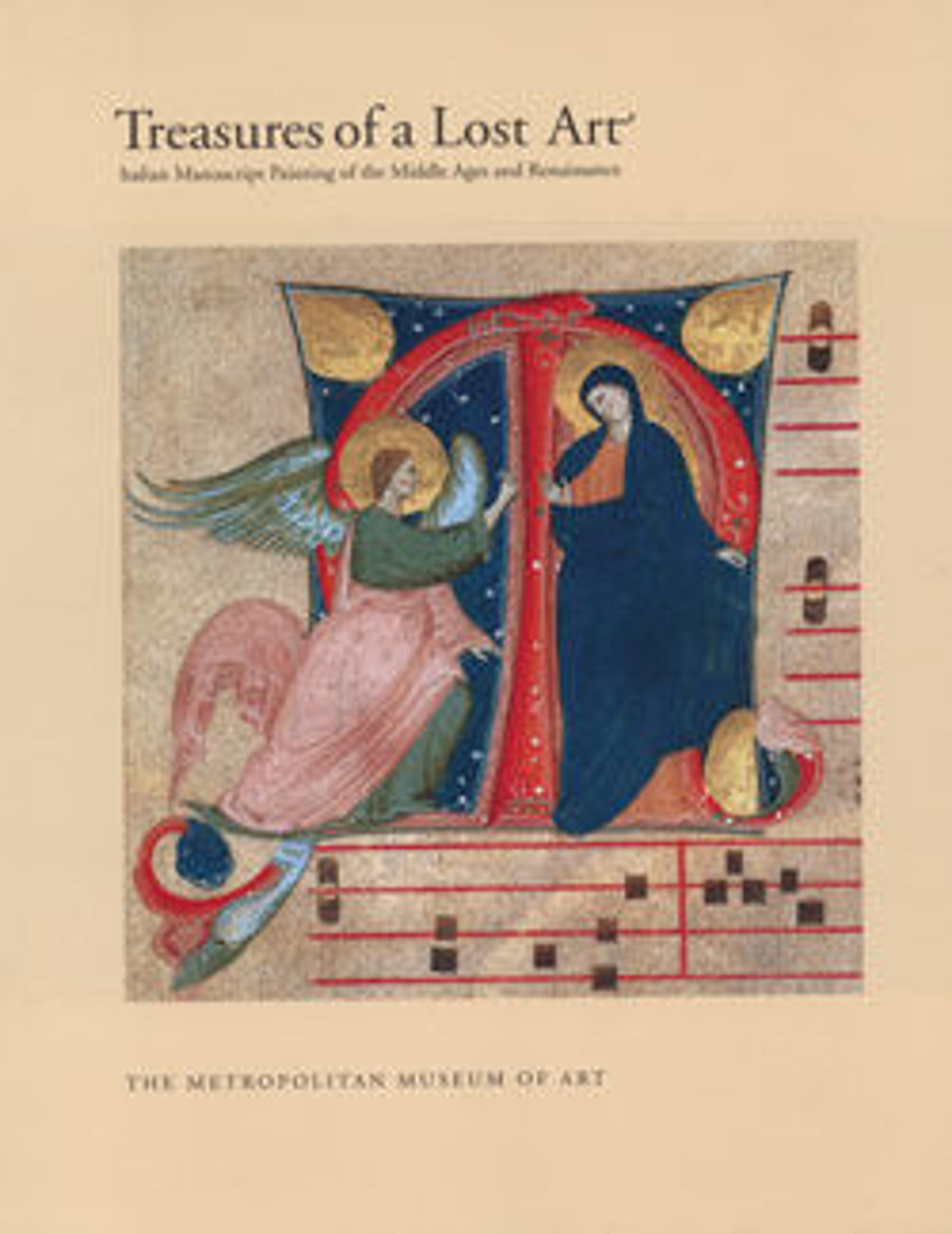David with His Foot in a Noose in an Initial O
Initial O introducing the Introit (opening chant) to the Mass for the third Sunday of Lent, Psalm 24:15: Oculi mei semper ad Dominumquia ipse ellevet de laqueopedesmeos, “My eyes are ever toward the Lord, for he shall pluck my feet out of the snare.”
This vibrantly colored initial portrays David holding the end of a noose around his foot while looking toward heaven to the hand of God. It is among a small group of miniatures by the Veronese painter Domenico Morone and belonged to an unidentified choir book known as a gradual that was likely made for a Franciscan monastery, perhaps San Bernardino di Verona. Domenico is known primarily for his panel paintings and large-scale frescoes for churches in the Veneto. His hard, linear style, sculpturesque figures, plastic manner of rendering drapery, and rocky landscape reveal the influence of the Paduan master Andrea Mantegna.
This vibrantly colored initial portrays David holding the end of a noose around his foot while looking toward heaven to the hand of God. It is among a small group of miniatures by the Veronese painter Domenico Morone and belonged to an unidentified choir book known as a gradual that was likely made for a Franciscan monastery, perhaps San Bernardino di Verona. Domenico is known primarily for his panel paintings and large-scale frescoes for churches in the Veneto. His hard, linear style, sculpturesque figures, plastic manner of rendering drapery, and rocky landscape reveal the influence of the Paduan master Andrea Mantegna.
Artwork Details
- Title: David with His Foot in a Noose in an Initial O
- Artist: Domenico Morone (Italian, Verona ca. 1442–ca. 1518 Verona)
- Date: ca. 1500
- Medium: Tempera and gold on parchment
- Dimensions: 7 3/8 x 6 1/8 in. (18.7 x 15.5cm)
Initial Ground: 6 1/4 x 6 3/16 in. (15.8 x 15.7cm) - Classification: Manuscripts and Illuminations
- Credit Line: Robert Lehman Collection, 1975
- Object Number: 1975.1.2483
- Curatorial Department: The Robert Lehman Collection
More Artwork
Research Resources
The Met provides unparalleled resources for research and welcomes an international community of students and scholars. The Met's Open Access API is where creators and researchers can connect to the The Met collection. Open Access data and public domain images are available for unrestricted commercial and noncommercial use without permission or fee.
To request images under copyright and other restrictions, please use this Image Request form.
Feedback
We continue to research and examine historical and cultural context for objects in The Met collection. If you have comments or questions about this object record, please contact us using the form below. The Museum looks forward to receiving your comments.
